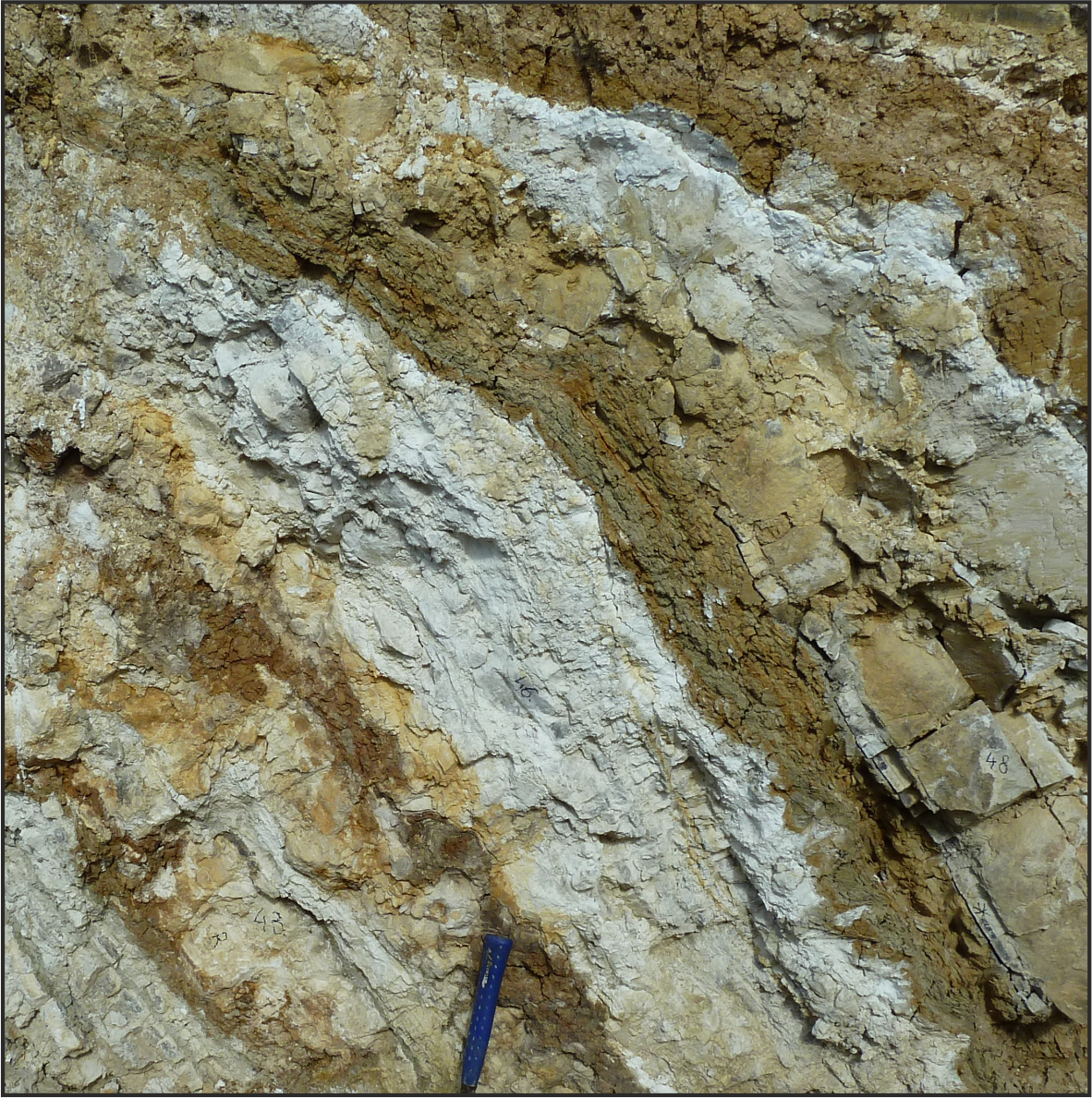An exceptional surface occurrence: the middle to upper Miocene succession of Pécs-Danitzpuszta (SW Hungary)
Abstract
The Pécs-Danitzpuszta sand pit is the most important outcrop of the oldest Pannonian (upper Miocene, Tortonian) deposits in southern Hungary. A trench excavated in 2018 exposed Lake Pannon deposits and underlying Paratethys strata down to the upper Badenian (Serravallian), and together with the sand pit they make up a continuous sedimentary succession with a true thickness of ~220 metres. Due to tectonic deformation, middle Miocene deposits and carbonates in the lowermost Pannonian are overturned. Layers become vertical close to the marl-sand boundary, then the dip changes to normal, with continuously decreasing dip angles. The exposed succession starts with 5 m of upper Badenian (13.8-12.6 Ma old) calcareous marls and sandy limestones with sublittoral, then littoral molluscs, which were deposited in the normal salinity seawaters of the Central Paratethys. The overlying 8 m of sand, silt, sandy breccia and conglomerate are fossil-free,; only the lowermost silt layer contains reworked Badenian microfauna. This unit probably accumulated from gravity-driven flows in a fan-like, probably terrestrial depositional setting. The next 7.5 m of frequently alternating thin-bedded limestones, marls and clays with sublittoral biota represent rapid transgression. Foraminifers, ostracods, molluscs and calcareous nannoplankton indicate late Sarmatian, then Pannonian age for this interval. However, the locations of the boundaries indicated by the various groups are not are not consistent, making the position of the Sarmatian/Pannonian boundary uncertain. The Sarmatian beds with marine fossils still accumulated in the Paratethys, between ~12.1–11.6 Ma, under varying salinities due among others to temporary freshwater input. The Pannonian strata already represent sediments of the brackish Lake Pannon. Above these beds, uniform calcareous marl becomes dominant with some clay layers and graded or structureless conglomerate to sandstone interbeds. The deposition of the overall 64- m- thick Pannonian calcareous marl section took place in the open, probably few -hundred -metres -deep water of the lake between ~11.62 and 10.5–10.2 Ma. It may represent a rare, well-exposed surface occurrence of the Endrőd Formation which is known from thousands of wells in the Pannonian Basin. Above this section, a 6-7 -m- thick transitional interval of silty marls and sands is followed by ~140 m of limonitic, pebbly sands. They have poor to moderate sorting and rounding, metre -thick beds with transitional boundaries and abundant fossils and clasts reworked from older Miocene units. Their accumulation took place between 10.2-10.5 and 9.6 Ma by gravity flows connected to deep-water portions of fan deltas.
















